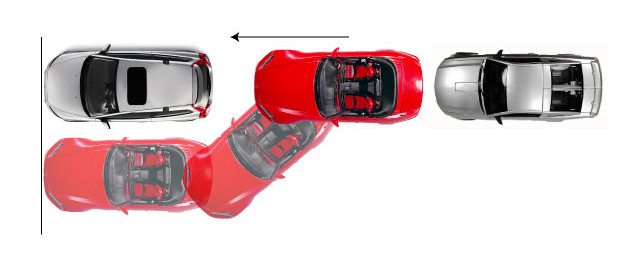
For many drivers – both unsophisticated and experienced, parallel parking is a sure opportunity for public humiliation. You get scared and even anxiety dreams of scratched bumpers or worse; ending up on YouTube as the “Ultimate Fail King”. You might have passed the driving test – driving in an empty parking lot, targeting two cones with enough space to even fit a limo; or perhaps you never learnt how to parallel park. Not wanting to brag like a kid who passed his exams without studying for it, parallel parking is quite straightforward when you master the trick. Believe it or not, parallel parking is all about ignoring the fear and learning the steps.
Our mission today is one: Follow the below steps and become a parallel parking pro! You will be so good that you won’t need someone standing outside next to your car doing faux air traffic controller signals. With a bit of practice, you will be able to master the intimidating part of safe driving.
Just before you begin, please find a space, which is a few feet longer than your own vehicle. It is critical that you confirm this space is legal and use your hazard signals as you pull up in front of the space.
Selecting a Parking Space
Find a suitable space. Get a space you can easily and safely get your vehicle into with less hustle and without hitting another vehicle. It is good to start with spaces that have two metres of extra space after which, you may be able to park in tighter spaces. You may use plastic bins as cons in a parking lot for practicing purposes.
Ensure that the space you choose is safe and legal parking space. You may look for signs that stipulate the parking regulations in that particular area. Ensure that you are not blocking or parking at the front of a fire hydrant or any other area that is not supposed to be blocked. Further, make sure that there is nothing sticking off at the end of each vehicle that you will be practising in between; such as a trailer hitch. If it’s there, ensure you get enough space.
Get into Position
Turn your signals on and take a back in position. Check your rear view mirror and adjust it to suit you and confirm that no one is just behind you. Brake gently to show that you are slowing down. By using the turn signal, pull up slowly to the next vehicle that is in front of the space. About 60 centimetres between your vehicle and the parked vehicle is just perfect. In case there is another vehicle approaching behind you, stay still where you are and keep signalling. You can further roll down your window and hand-signal to the other driver to go round you if possible. This is because the tighter the space, the closer you will need to get to the other vehicle.
Maneuvering Into the Space
For starter, you may consider getting someone to assist you if you feel that the space is too tight. It is critical to get someone to guide you into the desired spot from the outside of the vehicle. The person will help you estimate the space between your car and the obstacle behind you. You may shift your side mirror downwards to see a curb.
Start backing up now. Shift your car into reverse. Turn your steering wheel evenly and steadily towards the spot you are aiming until your vehicle is about an angle of 45 degree as it enters the spot.
Try and envision pushing the steering wheel towards the direction that you wish the back of the car to go. Do not swing the front of your vehicle into that space too early to avoid hitting the vehicle in front of you.
Back Most of the Way In
Continue backing in at that angle until your rear wheel which is nearest to the curb is about a 30 centimetres from the curb. This means that the rear of your vehicle would be a few centimetres from the vehicle which is behind your parking space. In case you rear tire hits the curb, note that you have gone too far. Just shift back into drive, then pull forward, and try again.
Start straightening the wheel out as you finish pulling in. Once the rear of your vehicle is in the space mostly, turn the steering wheel back towards the road and move backwards. The two good indicators are: when your front bumper is next to the rear bumper or when the licence plate of the vehicle in front of you is centred in your windshield. This final manoeuvre moves the vehicle into the ideal space. You can now straighten simultaneously. If the space is tighter, you might be required to start steering your wheel into direction a bit earlier.
Center the Vehicle in the Space
Once you are in the desired space, you may re-position your vehicle and get it a bit parallel to the curb and almost midway between the vehicles from both directions. If there is more space behind you, back up until you are almost touching the vehicle behind you. Shift the gear into drive and turn slightly towards the curb as you approach forward. This is to ensure that there is equal amount of space available in front and behind your vehicle.